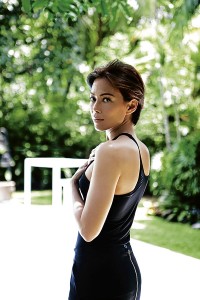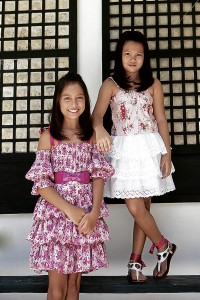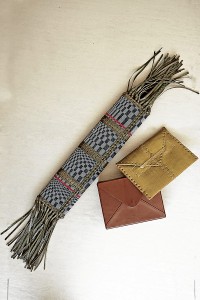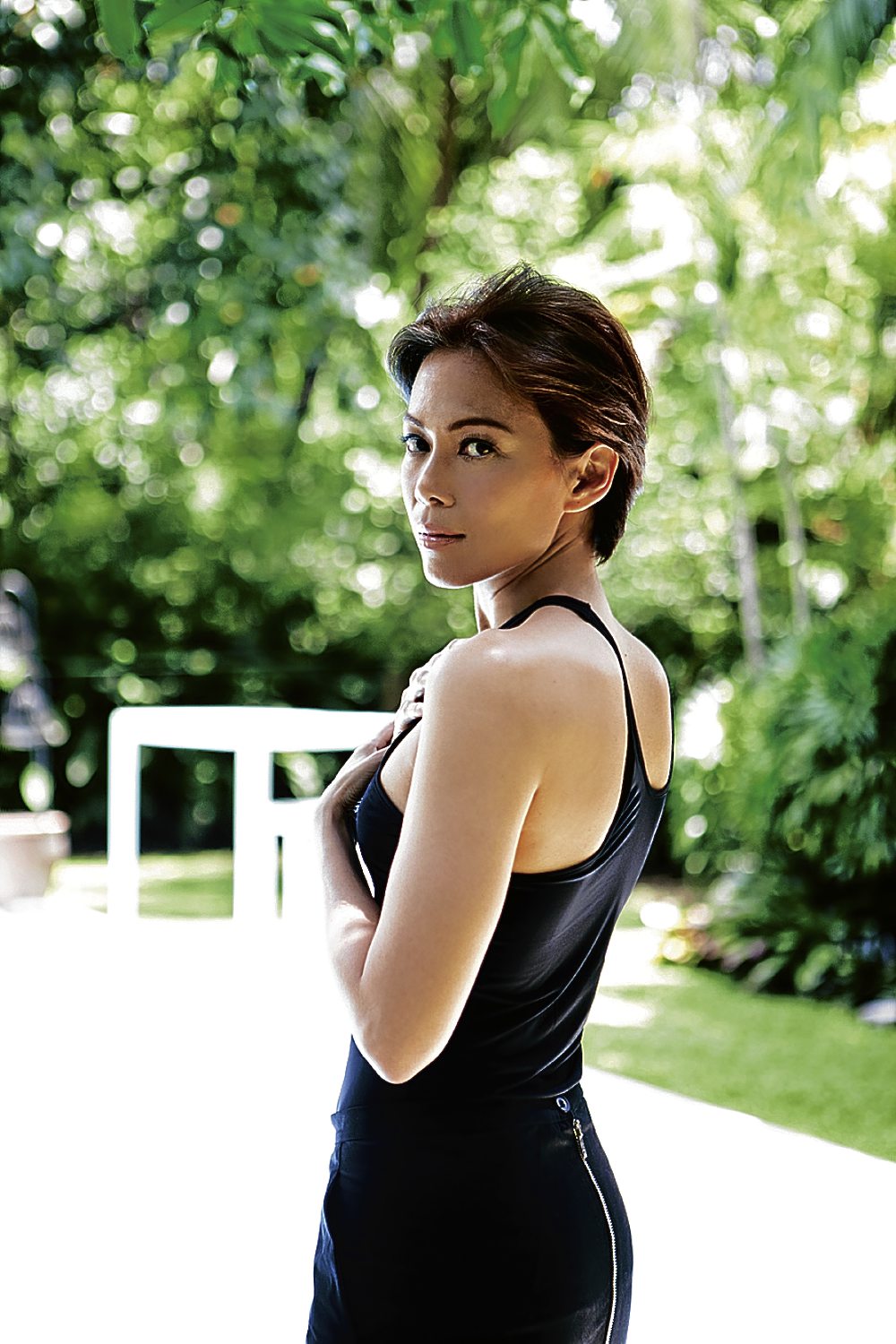 “I don’t care about fashion anymore,” said style sophisticate Mandy de la Rama-Santos. She said she does fashion “for work” and “that’s all.” For my clothing, I have zero interest in buying anything,” she added. “I don’t go anywhere.”
“I don’t care about fashion anymore,” said style sophisticate Mandy de la Rama-Santos. She said she does fashion “for work” and “that’s all.” For my clothing, I have zero interest in buying anything,” she added. “I don’t go anywhere.”
When husband, Duane Santos, a real estate executive and an elite athlete, would ask her to join him in corporate functions, she would usually decline.
“I had drawn the line,” Mandy said. “My days are full. I get home and cook every night. My daughter, Solene, can’t sleep without me. I’ve breastfed her for two and a half years. The umbilical cord is short because she’s the only child.”
Mandy peeled off the false lashes that fringed her eyes for the Inquirer Lifestyle pictorial, and heaved a sigh of relief. She had just finished the shoot, using her clothes, all in black, all her choices. She changed into a white tank Alexander Wang shirt with colored bra straps playfully peeping out, cutout denim shorts from her favorite brand Topshop, and rubber thongs.

For two decades, Mandy has been Manila’s “it” girl, a title which now makes her bristle. Ironically, one of the country’s most stylish women has a disinclination toward fashion and its caprices. But it makes sense for a mother who juggles family and her manufacturing business. This sartorially discriminating maven has no time for the bourgeois notions of status-fashion and the showiness that goes with it.
Mandy, 38, heads Solene Garments, which designs and manufactures Tarte Tatin children’s wear. She has started to produce and sell her designs for Rustan’s Kiddos.
Tarte Tatin is dressier and more upmarket as the fabrics are sourced from France. Kiddos offers a wider range, from basics to special occasions, at more affordable price points.
She believes that sales have been up 45 percent because of Kiddos’ new look and the frequent replenishment of retail stock.
The glossies’ favorite cover girl is often asked about her immersion in style. Her mother, Margie Jacinto de la Rama, was a garment exporter who, at one time, supplied The Gap Inc., and later produced for Marks & Spencer, Baby Dior, Jacadi Paris and other famous European children brands.

As young as 7 years old, Mandy would go to the factory after school and would also join her mother on business trips.
“My mom was an influence,” she said. “She would tell me the difference between this brand and that. Why it is expensive and this is why you can’t have it. She would bring us to Rustan’s and show the Kickers shoes with three stoplights underneath. Then she’d take us to shop at SM instead. We learned quality from our travels. We would get good pieces once in a while like a good coat and use it for five years.”
“My mom had good stuff. She’d say, ‘I earned this… She taught me values. Every time I have a shoot, I’d pull out the ‘old’ clothes. I just buy good pieces.”
While studying pre-law at the University of the Philippines, Mandy was already chic but in a pared down way. She’d be in Ralph Lauren or baggy T-shirts and jeans with Tretorn sneakers.
“We had to work for whatever we wanted,” she maintained.

This made the children realize that putting in more effort to acquire something would add value to it.
With her pixie face and gamine build, Mandy earned money from commercial modeling.
“Sometimes, if we wanted to buy something, my mom would tell my dad. He’d then say he’d come up with half and we would have to make up for the difference. But when you’ve saved enough for the half, you’d think, ‘Do I really want to buy that?’ We were brought up to be practical. We all slept in one room if we wanted air conditioning.”
Today, if Mandy were to indulge herself, it would be for the home. “Before, spending P20,000 for the house seemed expensive but not for a top. Where’s the logic there? A piece of furniture will go on to the next generation. Anytime I have extra cash, it goes back to the business.”
She recalled her other folly—in Paris, walking in towering heels to a meeting. “How stupid, ’no? Vanity can be painful.” She teetered down the cobblestone streets in pointy boots with spiked heels while the Parisians were comfortably shod in sneakers. “You don’t have to be in heels to be chic,” she said.
Any advice to the fashion clueless? “That’s a personal thing. I don’t think I’m stylish. I’m clean—no borloloy. I don’t wear jewelry or accessories. I don’t like prints. I like monochromes. That is stylish as it looks neat.”
Mandy is uncomfortable about wearing a ring, which feels more like a foreign body on her finger. However, on special occasions, she’ll wear a Bulgari Tubogas serpent watch.
Her daily work wear is a pair of jeans or clothes and ballet flats from Tarte Tatin. The rule is not to stand out ostentatiously in the rank and file.
She favors designer clothing with fastidious workmanship and considers avant-garde designer Yoji Yamomoto as an investment. His individualistic and complex cutting make his clothes timeless and versatile.

“I like intelligent clothing,” she said.
She counts Inno Sotto, Pepito Albert and Rajo Laurel as local reliables. “I just call. No need for a fitting.” For the Lifestyle shoot, she showed Albert’s foray into purses and lauded his work.
When she’s asked to wear a designer outfit as a special guest in a fashion show, Mandy would either return it or pay for it. “I have no boobs and it’s made for me. Who’s going to buy it afterwards?” she said.
Ultimately, being stylish boils down to practical attitude. “You can’t be attached to anything material or to how you look,” said Mandy. “There will always be a better-looking or newer model. So you need to hone what you’re good at. That will last.”













































